Otoplasty in Krakow
Search and Compare the Best Clinics and Doctors at the Lowest Prices for Otoplasty in Krakow

Find the best clinics for Otoplasty in Krakow
With Medijump you can browse 4 facilities offering Otoplasty procedures in Krakow. The cheapest price available is $507 in Wroclaw
Otoplasty in Poland
Price: $ 507
Otoplasty in Wroclaw
Price: $ 507
Otoplasty in Szczecin
Price: $ 1,009
Egypt offers the best prices Worldwide
Price: $ 100
Beauty Poland Krakow, located in Kazimierza Czapinskiego, Krakow, Poland offers patients Otoplasty procedures among its total of 29 available procedures, across 3 different specialties. The cost of a Otoplasty procedure starts from $1,083, whilst the national average price is approximately $1,016. All procedures and treatments are undertaken by the lead specialist at the Hospital, and they are not accredited by any recognized accreditations institutes
From 138 verified reviews
Iza Rak, 19 September 2020
Smaczny bufet polecam
Medical Poland Sp. z o.o., located in Kazimierza Czapinskiego, Krakow, Poland offers patients Otoplasty procedures among its total of 88 available procedures, across 11 different specialties. Currently, there's no pricing information for Otoplasty procedures at Medical Poland Sp. z o.o., as all prices are available on request only, whilst the national average price is approximately $1,016. There is currently a lack of information available on the specialists practicing at the Hospital, and they are not accredited by any recognized accreditations institutes
ESCULAP TOURS, located in Kazimierza Czapinskiego, Krakow, Poland offers patients Otoplasty procedures among its total of 52 available procedures, across 4 different specialties. Currently, there's no pricing information for Otoplasty procedures at ESCULAP TOURS, as all prices are available on request only, whilst the national average price is approximately $1,016. There is currently a lack of information available on the specialists practicing at the Hospital, and they are not accredited by any recognized accreditations institutes
Compare Before & After Photos of _procedure_photos.phpOtoplasty
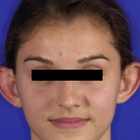
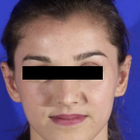
Front view
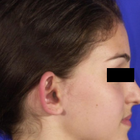
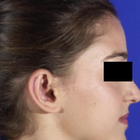
Full-side view
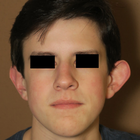

Front view
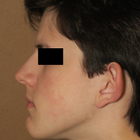
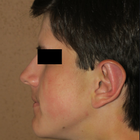
Full-side view
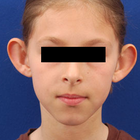
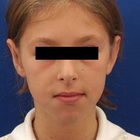
Front view
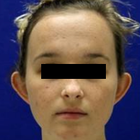
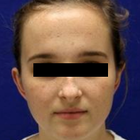
Front view
WHY US?
At Medijump, we're making medical easy. You can search, compare, discuss, and book your medical all in one place. We open the door to the best medical providers worldwide, saving you time and energy along the way, and it's all for FREE, no hidden fees, and no price markups guaranteed. So what are you waiting for?

Free

Best Price

Widest Selection

Risk-Free
What you need to know about Otoplasty in Krakow

Otoplasty, also referred to as cosmetic ear surgery, is a type of cosmetic procedure to change the size, shape, or position of the ear. It is performed on the visible part of the outer ear, called auricle. Some people choose to have the surgery to correct odd-shaped ears due to an injury or birth defect. Others have it because they are concerned with how their ears protrude too far from their head. Otoplasty can be performed at any age after the ears have reached their full size, generally after age 5. In some cases, the surgery may be done as early as age 3.
There are several types of otoplasty. The following are the most common:
- Ear pinning draws the ears closer to the head. It is usually done on people whose ears stick out too far from their head.
- Ear augmentation is ideal for individuals whose ears are small or have not completely developed. This type of otoplasty can increase the size of the outer ear.
- Ear reduction is usually done on people with macrotia, which is a condition when the ears are larger than normal. Otoplasty can reduce the size of the ears.
What does a Otoplasty Procedure Involve?
Otoplasty is typically carried out under local anesthesia with a sedative, so you will be awake but you will not feel any pain. In some cases, general anesthesia may be used, typically for younger children.
The techniques used by your surgeon vary based on the type of otoplasty you are having. In general, your surgeon makes an incision either within the inner creases of your ears or on the backs of your ears. Then, your surgeon manipulates the tissue of the ear, which may include removal of cartilage or skin, grafting of cartilage to the ear, or folding and shaping of cartilage using permanent stitches. Once your surgeon is done correcting the shape, size, and position of your ears, the incisions are closed with stitches.
How Long Should I Stay in Krakow for a Otoplasty Procedure?
Otoplasty can take between 1 and 3 hours to perform, depending on the complexity and the specifics of the procedure. It is typically done as an outpatient procedure, which means you can leave the hospital on the same day. It is recommended that you stay in Krakow for 7 more days for follow-up checkups and removal of stitches.
What's the Recovery Time for Otoplasty Procedures in Krakow?
The recovery period may vary from one person to another. You may experience numbness for several weeks, and mild bruising for about 2 weeks. For several months, your ears may feel stiff and sore.
You should be able to go back to work and resume your normal activities, including exercise, within one to two weeks after surgery. Physical contact sports, such as rugby, football, or judo, should be avoided for at least 3 months. You should also avoid swimming for up to 8 weeks following your otoplasty.
What sort of Aftercare is Required for Otoplasty Procedures in Krakow?
Your surgeon will provide post-operative instructions. Make sure to follow the instructions carefully to promote smooth and quick recovery. You should rest with your head elevated on 2-3 pillows to minimize swelling. It is recommended that you eat a light, soft, and cool diet for several days. Take pain medication as prescribed by your doctor. Avoid sleeping on your side or rub the incisions to keep pressure off your ears. Consider wearing shirts with loose-fitting collars or button-down shirts.
What's the Success Rate of Otoplasty Procedures in Krakow?
Otoplasty is a safe and effective procedure, with high satisfaction rates. More than 90% of people who had the procedure claimed to be extremely happy with the results. Note that it may take some time for the result to be fully visible.
While it is a safe procedure, you still need to be aware of possible risks and complications that otoplasty carries. These include bleeding, hematoma formation, infection of the skin, infection of the cartilage of the ear, permanent or temporary numbness around the affected area, scar or keloid formation, unfavorable results, prolonged pain, narrowing of the external ear canal, impaired healing, changes in skin sensation, asymmetry, and overcorrection.
Are there Alternatives to Otoplasty Procedures in Krakow?
There are not many viable alternatives to otoplasty as of yet. One of the most popular alternatives is nonsurgical otoplasty, which does not require any incisions. The procedure uses special sutures to pin the ears back and achieve a more symmetrical look. These sutures are woven into the ears and will remain in place permanently. They are also virtually invisible, so the results will look natural.
For babies under three months old with prominent ears, ear-molds can be taped to their ears to reshape the ears without surgery. This type of treatment typically takes about six to eight weeks.
What Should You Expect Before and After the Procedure
Before otoplasty, you may have prominent or large ears or other deformity caused by an injury or birth defect that bothers you. Some people also feel self-conscious and embarrassed by the shape, size, and position of their ears. After the procedure, your ears will be corrected. Small or underdeveloped ears will be augmented to increase the size, the size of large ears will be reduced, and prominent ears will be drawn closer to the head. Your appearance will improve and you may feel more confident.
Whilst the information presented here has been accurately sourced and verified by a medical professional for its accuracy, it is still advised to consult with your doctor before pursuing a medical treatment at one of the listed medical providers
No Time?
Tell us what you're looking for and we'll reachout to the top clinics all at once
Enquire Now

Popular Procedures in Krakow
Prices Start From $28

Prices Start From $1,945

Prices Start From $120

Prices Start From $275

Recommended Medical Centers in Krakow for Otoplasty

- Interpreter services
- Translation service
- Religious facilities
- Medical records transfer
- Medical travel insurance
- Health insurance coordination
- TV in the room
- Safe in the room
- Phone in the room
- Private rooms for patients available

- Interpreter services
- Translation service
- Religious facilities
- Medical records transfer
- Medical travel insurance
- Health insurance coordination
- TV in the room
- Safe in the room
- Phone in the room
- Private rooms for patients available

- Interpreter services
- Translation service
- Religious facilities
- Medical records transfer
- Medical travel insurance
- Health insurance coordination
- TV in the room
- Safe in the room
- Phone in the room
- Private rooms for patients available

- Interpreter services
- Translation service
- Religious facilities
- Medical records transfer
- Medical travel insurance
- Health insurance coordination
- TV in the room
- Safe in the room
- Phone in the room
- Private rooms for patients available

- Interpreter services
- Translation service
- Religious facilities
- Medical records transfer
- Medical travel insurance
- Health insurance coordination
- TV in the room
- Safe in the room
- Phone in the room
- Private rooms for patients available

- Interpreter services
- Translation service
- Religious facilities
- Medical records transfer
- Medical travel insurance
- Health insurance coordination
- TV in the room
- Safe in the room
- Phone in the room
- Private rooms for patients available

- Interpreter services
- Translation service
- Religious facilities
- Medical records transfer
- Medical travel insurance
- Health insurance coordination
- TV in the room
- Safe in the room
- Phone in the room
- Private rooms for patients available

- Interpreter services
- Translation service
- Religious facilities
- Medical records transfer
- Medical travel insurance
- Health insurance coordination
- TV in the room
- Safe in the room
- Phone in the room
- Private rooms for patients available
Otoplasty in and around Krakow
About Kraków
Kraków is the second-largest and also one of the oldest cities in Poland. It was the official capital of the country until 1596 and has been one of the leading centers of Polish economic, academic, cultural, and artistic life. Named as one of the most beautiful cities in Europe, Kraków is brimming with stunning architecture, enthralling history, and riveting culture. Today, the city is at the forefront of Europe’s medical tourism. The most sought-after treatments are dentistry and cosmetic surgery. International medical tourists, particularly from neighboring countries, come to this city for its affordable procedures, fully organized healthcare system, and skilled specialists.
Popular Parts of Kraków
Kraków is full of charm; from its cobbled streets and beautiful squares to stunning churches and a castle. The most popular part of the city is the Old Town, which was declared a UNESCO World Heritage Site. Visitors who come to the Old Town can admire the Wawel Royal Castle, which is an architectural wonder in a medieval, renaissance, and baroque style. This castle is now a museum containing five separate sections. Another popular part of the Old town is the Main Market Square, which is the biggest medieval town square in Europe with a 15th century Town Hall Tower, a 16th-century Cloth Hall at the center, and a bronze statue of Polish 19th-century poet Adam Mickiewicz. Other popular parts of the city are Schindler’s Factory, the Underground Museum, and Auschwitz.
Transport in Kraków
Kraków John Paul II International Airport is where most international tourists will arrive. It serves flights to numerous cities around Europe and the Middle East. The most affordable way to get around the city is by public buses and trams. Taxis are reasonably priced and comfortable, but make sure to use official taxis that use a meter as there are illegal taxis that will try to overcharge you. Uber is available and it is the cheapest option if you don’t want to take public transit. Bicycles are also popular in the city and bike rentals are widely available.
Visas in Kraków
Poland is a part of the Schengen area. Therefore, citizens of 62 countries, including the US, Canada, Japan, and Australia, can stay in Kraków for up to 90 days without a visa. EU citizens do not need a visa and can stay indefinitely. Citizens of other countries need to obtain a visa prior to arrival. Make sure you have a passport that is valid for at least 6 months.
Weather in Kraków
Summer, from June to August, is generally warm with an average temperature of about 25°C. The spring (April – May) and autumn (September – October) have great weather with milder temperatures. Note that spring is usually a bit rainier than other seasons. Winter can get pretty cold, with the temperatures dropping below 0.
Additional Info
- Local Currency: The official currency is the Polish Zlotych (PLN). 1 USD is equivalent to approx. 3.8 PLN.
- Money & Payments: ATMs are easy to find in Kraków. Credit cards are accepted in most establishments. Tipping is optional and not mandatory.
- Local Language: Polish is the native language and English is widely spoken by younger people.
- Local Culture and Religion: Most of the population adheres to Christianity. However, other religions, such as Judaism, are also present.
- Public Holidays: Kraków celebrates various public holidays, including the New Year’s Day, Three King’s Day, Easter, Constitution Day, Corpus Christi, All Saints’ Day, Independence Day, and Christmas Day.
Popular Searches
- Plastic Surgery in Thailand
- Dental Implants in Thailand
- Hair Transplant in Thailand
- Breast Augmentation Thailand
- Gastric Sleeve in Thailand
- Gender Reassignment Surgery in Thailand
- Laser Hair Removal in Bangkok
- Botox in Bangkok
- Dermatology in Bangkok
- Breast Augmentation in Bangkok
- Coolsculpting in Bangkok
- Veneers in Turkey
- Hair Transplant in Turkey
- Rhinoplasty in Turkey
- Stem Cell Therapy in Mexico
- Rhinoplasty in Mexico
- Liposuction in Mexico
- Coolsculpting in Tijuana
- Rhinoplasty in Korea
- Scar Removal in Korea
- Gastric Sleeve in Turkey
- Bone Marrow Transplant in India
- Invisalign in Malaysia
- Plastic Surgery in the Dominican Republic
- Tummy Tuck in the Dominican Republic
- Plastic and Cosmetic Surgery in Poland
- Rhinoplasty in Poland
- Hair Implant in Poland
- Dental Implants in Poland
- IVF in Turkey

